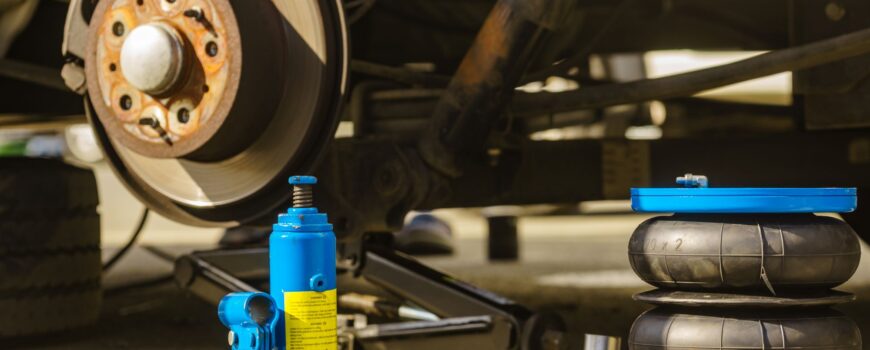Your cart is currently empty!

How Lift Affects Vehicle Handling and Safety – Center of Gravity, Braking, and Electronics
Lifting a car affects its performance and safety. Lifting the suspension or body pushes the center of gravity higher, which means the truck feels less steady in corners. Braking also takes a hit – stopping distance gets longer, and the brakes themselves work harder.
On top of that, advanced systems like ABS or traction control may need a recalibration to keep everything running right. Understanding these implications enables owners to make safer decisions when installing a raise kit. The article covers the main aspects you need to know.
Center of Gravity (CG)
The center of gravity has a direct impact on vehicle dynamics and weight distribution. When you lift the suspension, you will make the vehicle more unstable. The main impacts include:
- Stability. A higher center of gravity causes more body roll, making cornering less predictable;
- Risk of rollover. The vehicle is more likely to tilt in rapid maneuvers or on rough terrain;
- Steering response. Handling might become slower and less accurate.
A low center of gravity means better control and safety. Any lift should pair with proper suspension and careful driving.
Braking Performance
When a vehicle is elevated, its braking capability varies due to increased height and larger tires. Here are the points to consider:
- Weight transfer. A higher center of gravity causes greater forward weight transfer, resulting in increased load on the front brakes. It results in increased heat and stress;
- Stopping distance. Larger tires and extra weight raise the distance required to stop safely in any situation;
- Brake wear. Increased load and heat reduce the life of pads and rotors. Therefore, regular maintenance is mandatory.
Upgrading brake components, selecting appropriate tires, and scheduling regular checks contribute to powerful and predictable braking following a raise.
Electronics and Driver-Assist System
Sensors and calibrations are set for factory height, so electronics and driver-assist systems may be less effective when you use a vehicle lift. The key effects include:
- ABS and traction control. Changes in wheel speed and angle may confuse these safety mechanisms;
- Stability control. Altered suspension geometry may limit the capacity to prevent skids;
- Speedometer and odometer. Larger tires might lead to inaccurate speed and distance estimations.
Sensor recalibration and software updates help maintain the proper function of electronics aids after a lift.
Legal and Insurance Considerations
Lifting a car can impact both legal compliance and insurance coverage. Many countries have regulations on suspension height, bumper level, and tire rise. Breaches in these parameters may result in penalties or failed inspections.
Mess up the lift or hide it, and the insurance company might hike your rates or flat-out refuse a claim. Best thing you can do? Check the local rules, tell your insurer, and hang on to the paperwork. It’s the only way to stay safe and dodge nasty surprises with money later.
Practical Recommendations
When lifting a car, you have to remember about your safety, meeting legal regulations, and maintaining car performance. Here are some vital tips that will help you:
- Professional installation. It ensures the right fit, alignment, and suspension geometry;
- Quality lift kits. Choose components that have been tested for strength and durability;
- Brake and electronic improvements. Maintain stopping power and ensure proper sensor performance;
- Tire choices. Use tires that are appropriate for the lift height and load rating;
- Regular inspections. Check the suspension, brakes, and electronics often.
Adhering to these principles keeps a raised car safe, dependable, and street-legal.
Final Verdict on Car Lifts
Car lifts bring style and real off-road muscle, but they change how a vehicle behaves. A higher center of gravity means rollovers are more likely. Bigger tires stretch braking distance. Modern safety systems might even need recalibration. Done right, though – with proper installation and upkeep – the lift can stay safe, reliable, and fully legal while still delivering the extra height and capability drivers want.
 Black Friday Sale is Live! Up To 15% off on most Brands & Products!
Black Friday Sale is Live! Up To 15% off on most Brands & Products!